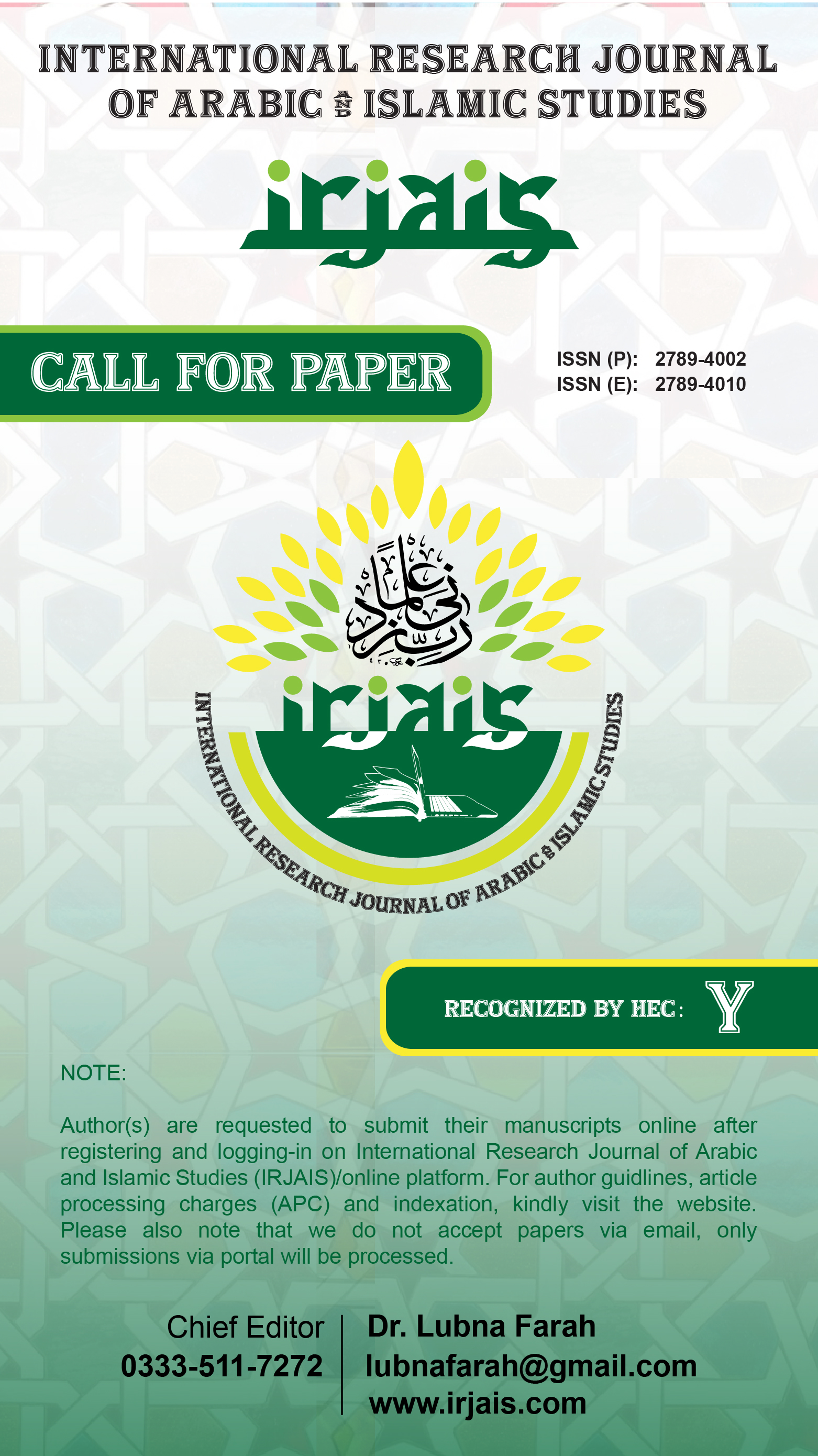منهج العيني في شرح أحاديث السيرة النبوية وأصول الاستنباط منها
The methods of Allama Aini in the narrations of Seerah And the principles of Extraction from them
Keywords:
Allama Aini, Narrations, Extension of the law, Humanity, Method and Style.Abstract
The interpretation and explanation of the sayings of Allah Ta'ala and His Messenger (PBUH) were fulfilled perfectly by the learned scholars of every era, considering it their duty. While the scholars made literary and authorial efforts to inform the public about the facts of the prophet's decrees and the mysteries hidden in them, they highlighted the social, social, universal, moral, political, judicial and spiritual aspects of the prophet's life. Efforts were also made to make his personality clear as a beacon for every individual and every section of humanity. While these works show the generosity of the Holy Prophet (PBUH), at the same time, they are also a source of knowledge for thinkers. There is also a source of guidance for the general public. Due to the change of time, the behavior of the Mercy of the Prophet (PBUH) in solving some problems also helps to solve the problems, so many Muhaddiths and scholars have tried to present a solution to this problem by talking about the Life of the Prophet (PBUH). Allama Aini is also counted among these personalities. Allama highlighted the events of Prophet life and also narrated the laws related to these events, Therefore, the method and style of Allama Aini will be discussed below in the explanation of traditions and From these traditions, the rules and regulations of Aini will be mentioned in the extension of the law.





